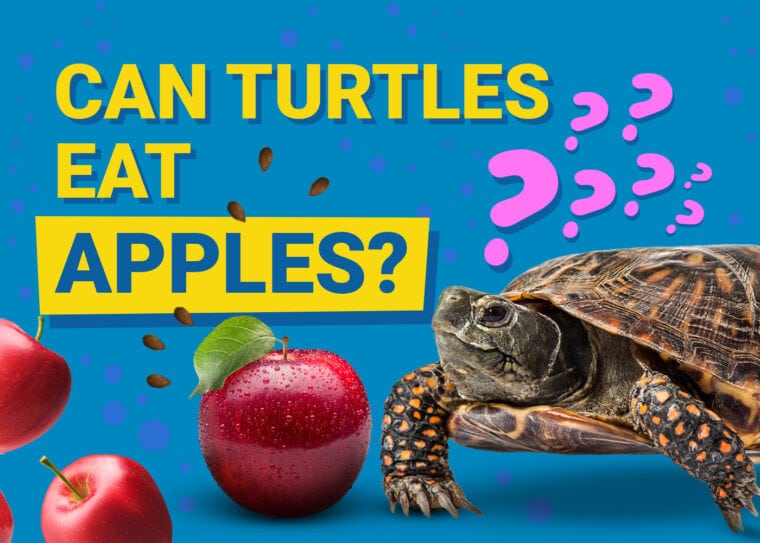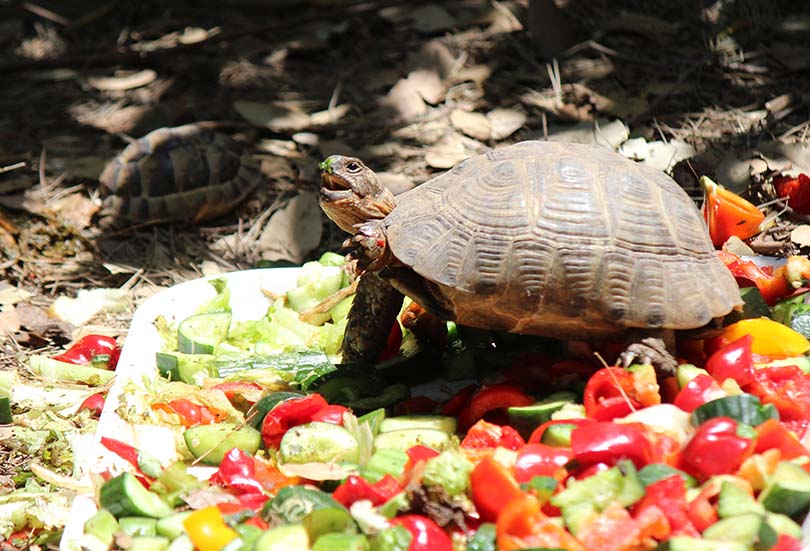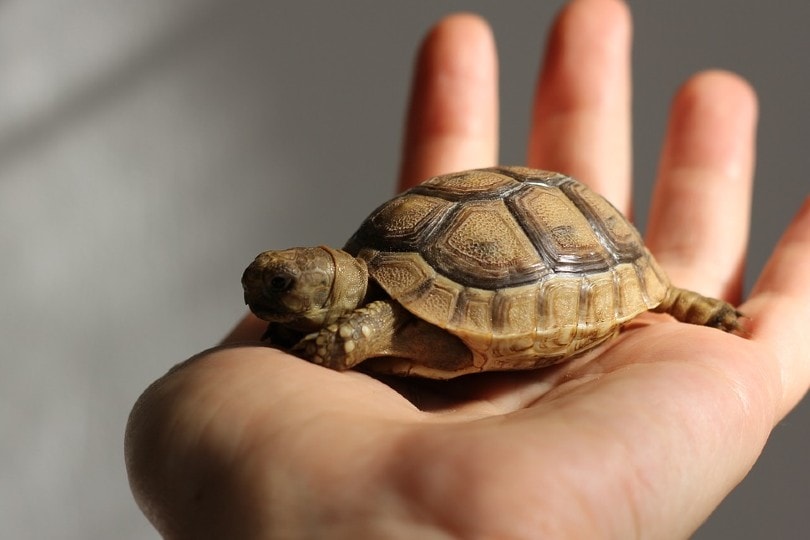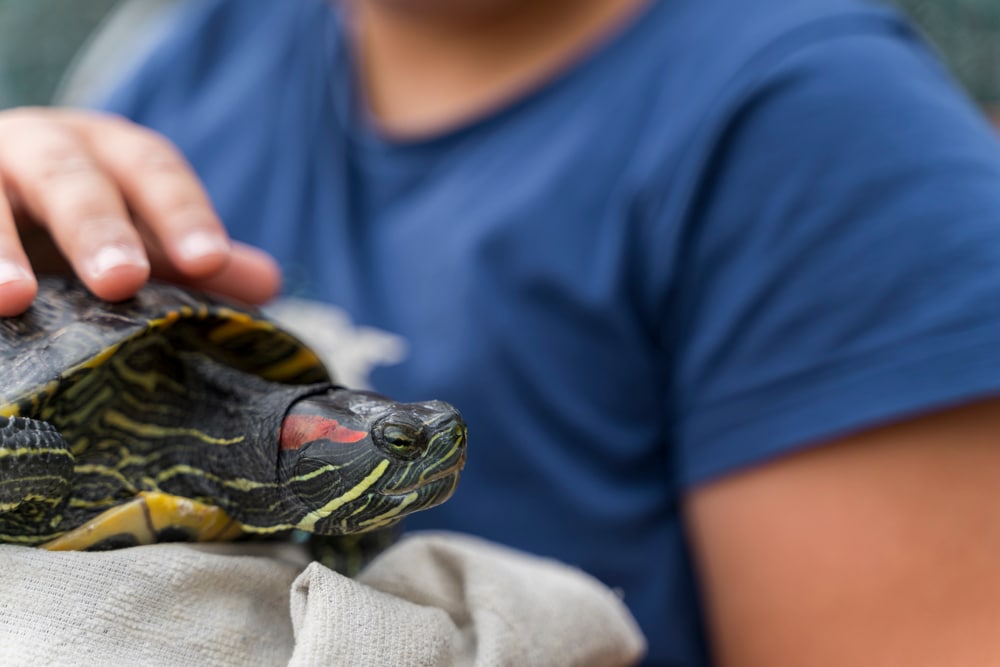
If you have a pet turtle, you may be wondering about the best snacks to feed your shelled pal. While most turtles are omnivores, their nutritional needs are quite different from those of humans.
For example, turtles can technically eat apples. However, they should be treated as occasional treats only. In this article, we explore this topic more in-depth, covering why turtles can’t eat apples regularly, what turtles eat in the wild and as pets, and the vitamins and minerals that turtles need to be healthy.
Why Can’t Turtles Eat Apples Regularly? What Fruits Can They Eat?
Don’t get us wrong—turtles love fruit. However, you should generally feed fruit to turtles more sparingly than you would vegetables because veggies tend to be more nutritious. Apples in particular are fine in small quantities and even have nutritional benefits for turtles, such as vitamin A.
However, like all fruits, apples are high in sugar, which turtles cannot digest in large amounts. The citric acid can also cause an upset stomach in your turtle and may even cause it to vomit. Other fruits containing citric acid can have this effect and should be avoided or offered only sparingly; not surprisingly, lemons, oranges, grapefruits, limes, and some berries are on this list.
If you are going to offer your turtle a snack of fruit, consider some other options that may be easier on your turtle’s stomach. Good choices include bananas (including the peel), mangos, tomatoes, kiwis, and melons. Make all fruit no more than 10% of your turtle’s diet to avoid any digestive problems.

What Do Turtles Eat?
In the wild, turtles eat a variety of both plant and animal matter. The primary foods that make up their diets include grubs, earthworms, snails, caterpillars, beetles, mushrooms, flowers, grasses, berries, and fruits. Turtles will also eat carrion, or the flesh of dead animals, if they happen to find it.
Pet turtles usually eat a simpler diet of foods meant to meet their nutritional needs. When looking for turtle food, choose pellets specifically formulated for turtles. You can also purchase gut-loaded insects and earthworms at most pet stores. Keep in mind that there are many different turtle species, and a turtle’s specific dietary needs will depend on its species and its age. Consult your veterinarian before making any major changes in your turtle’s diet.

The 4 Vitamins & Minerals That Turtles Need
In addition to the previous foods, you can offer snacks to your turtle to supplement its diet. Aim for treats that will provide your turtle with the vitamins and minerals that it needs to be healthy. Here, we have listed key nutrients that turtles need, as well as some snack ideas that are good sources of these nutrients.
1. Calcium
Calcium helps your turtle develop and maintain healthy bones. It also plays a vital role in muscle development. Turtles that do not get enough calcium in their diets can develop skeletal problems and may develop anorexia due to a slowing down of their gut muscles. In some cases, deficiency can lead to cardiac failure.
In order to help your turtle get more calcium in its diet, offer them plenty of leafy greens, such as kale, which are full of calcium. You can feed your turtle a bit of greens on a daily basis. Other calcium-rich snacks include crayfish, crickets, and roaches. If you feel that your turtle is still not getting enough calcium, you may want to consider adding a calcium supplement to its routine. For aquatic turtles, you might consider purchasing a slow-releasing calcium block, which dissolves in your turtle’s water and helps your turtle get the calcium it needs.

2. Phosphorus
Like calcium, phosphorus is an essential mineral that helps your turtle develop strong bones. However, it is important to properly balance the amount of calcium and phosphorus in your turtle’s diet. Every turtle needs calcium in order to absorb phosphorus, and when its calcium levels are too low, its body will begin to draw on internal sources of calcium, such as its bones. This imbalance of phosphorus and calcium can lead to metabolic bone disease.
Many of the foods your turtle eats regularly contain phosphorus, so it is not usually necessary to supplement its diet with this particular nutrient. It’s important to focus on calcium supplementation instead because turtles need a greater ratio of calcium to phosphorus, and they often don’t get what they need from their diets.

3. Vitamin A
Vitamin A is another important vitamin that you should make sure to add to your turtle’s regimen. Vitamin A deficiency in turtles can lead to lots of different issues, including respiratory disease, vision loss, and abscesses of the ear. In addition to formulated supplements, you can offer your turtle several different types of fresh foods to make sure it gets enough of this important vitamin. These foods include carrots, yellow squash, sweet potatoes, leafy green vegetables, and fish or fish oil.
4. Vitamin D3
If your turtle spends a lot of its time outdoors, it may not need a vitamin D3 supplement. Unfiltered sunlight is the best source of vitamin D that your turtle can get. However, if your turtle spends all of its time indoors, it makes sense to consider supplementing your turtle’s vitamin D intake in some way.

You can always add a UV light bulb to your turtle’s enclosure, but it isn’t as good as the real thing. If possible, it is a good idea to let your turtle out of its enclosure and give it an opportunity to sunbathe outdoors a few times a week. Of course, you need to monitor this process to make sure no predators are nearby. You should also be aware that turtles can burn if they get too hot, so pay attention to the weather, and don’t keep your turtle outside for more than 30 minutes or so.
If you make sure your turtle gets plenty of sun time, it is unlikely that it will need much more supplementation. However, you could always try offering snacks rich in vitamin D. Over-supplementation can be a problem for reptile owners who give their turtles formulated supplements, but your turtle is unlikely to overdose on vitamin D if you offer it in the form of food. Foods that provide an excellent source of vitamin D include trout, mushrooms, egg yolk, and canned tuna in water.
Conclusion
While turtles can eat apples and other fruits, they should be a limited part of your pet’s diet, reserved for special treats. For daily snacks, choose vegetables and other foods that are full of nutritional value for turtles. Kale is an excellent choice because it is loaded with calcium. Feed your turtle a handful of kale on a daily basis to help your pet meet its nutritional requirements.
You may also want to read:








